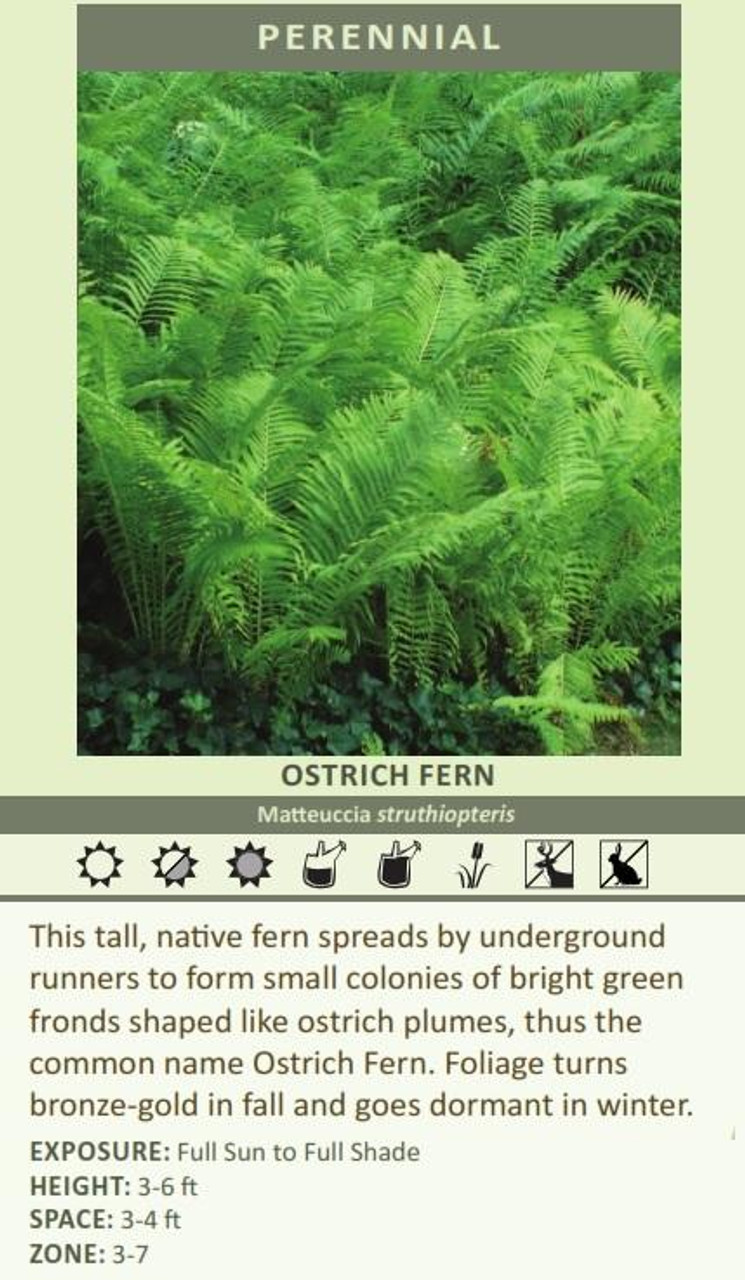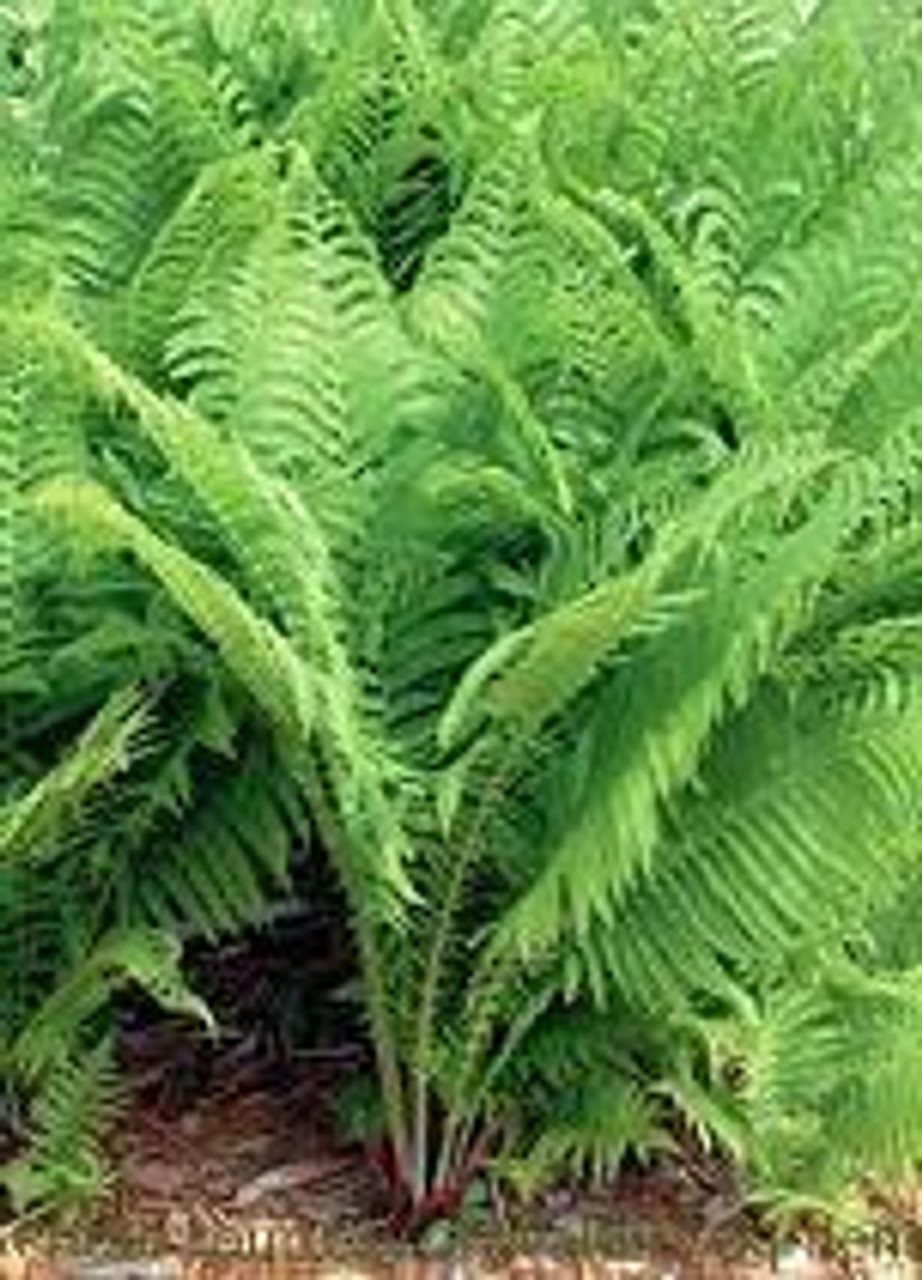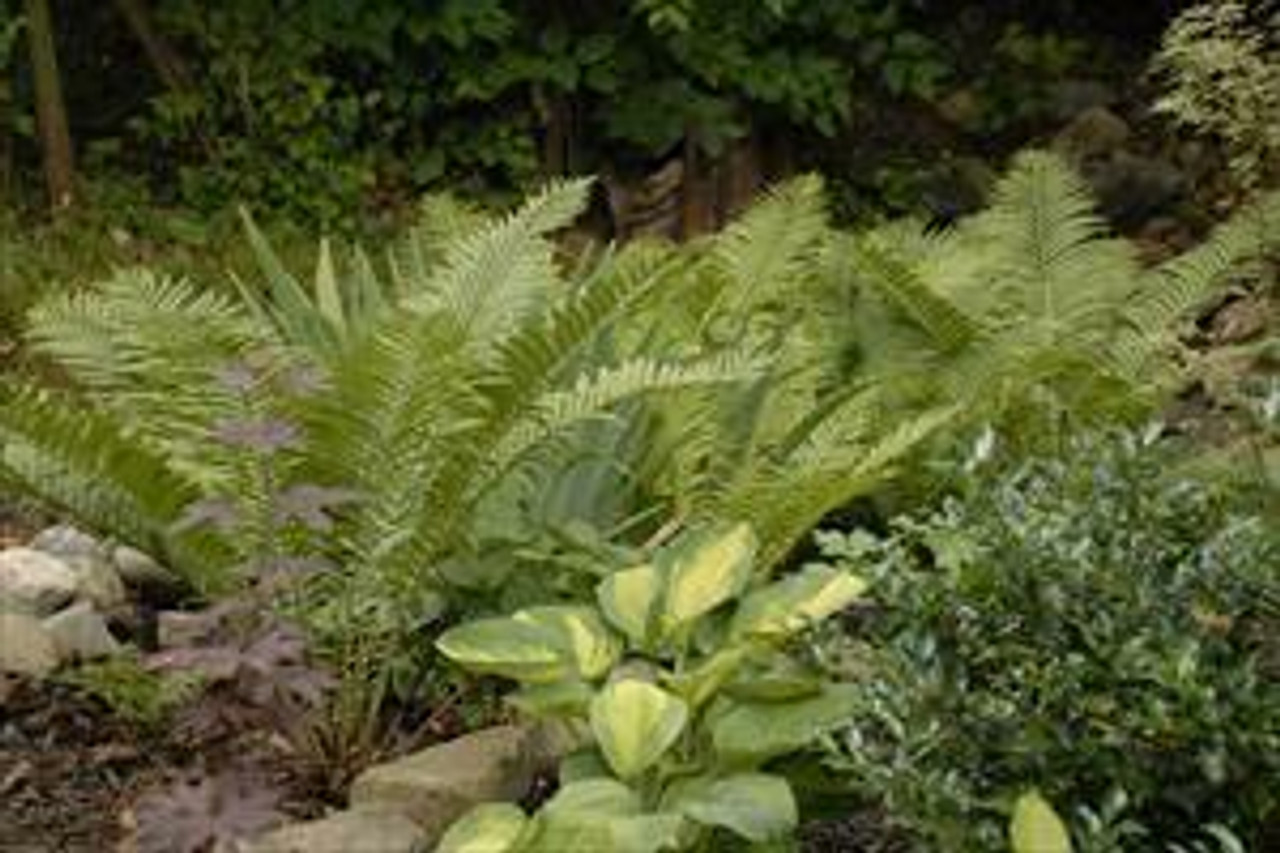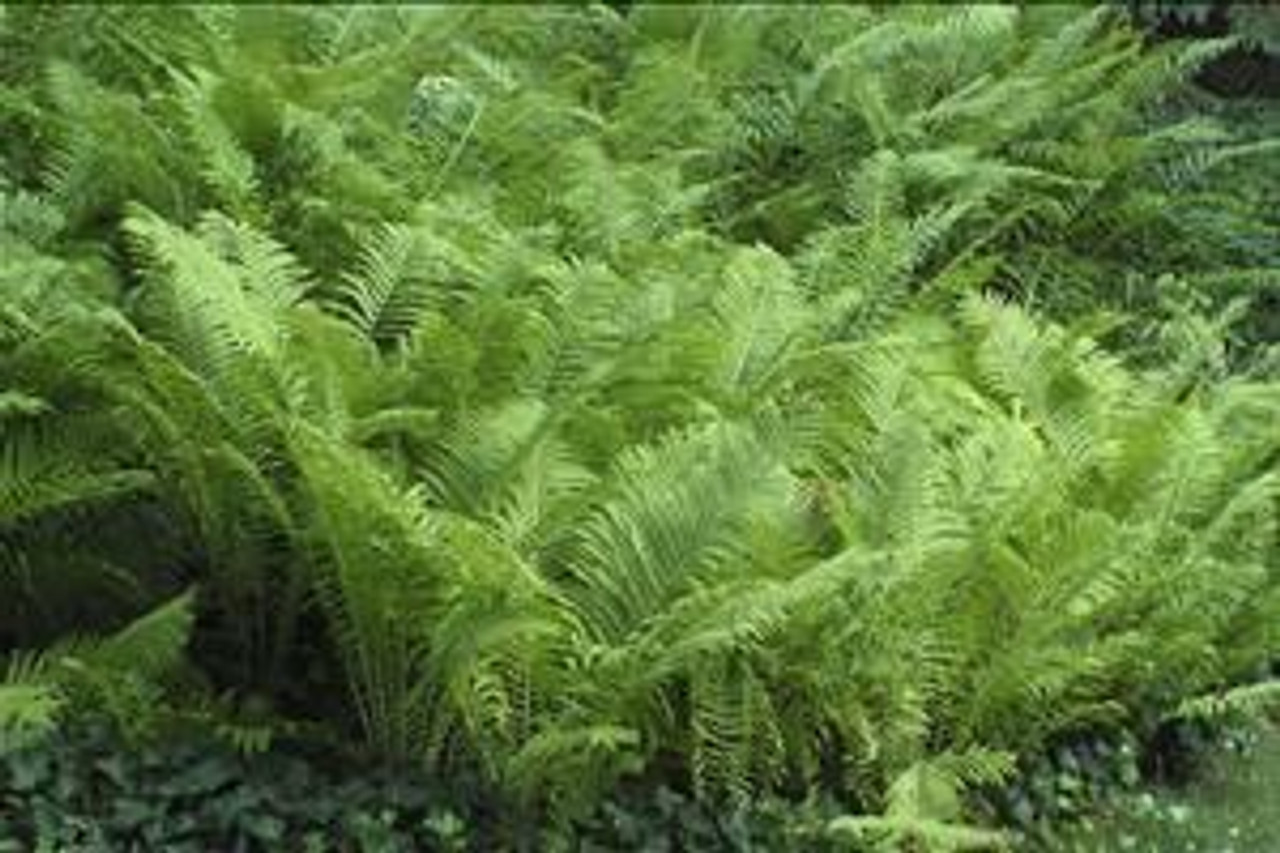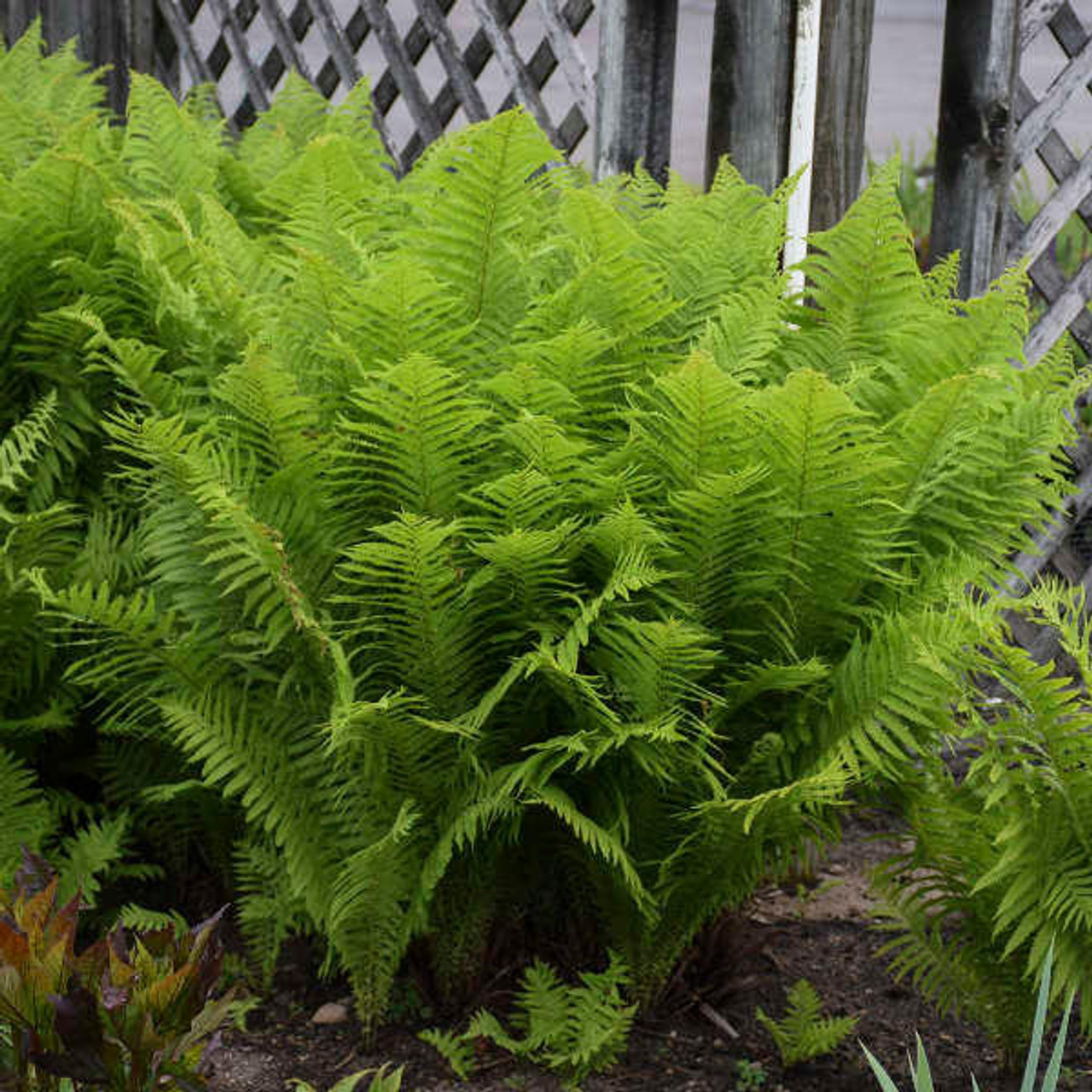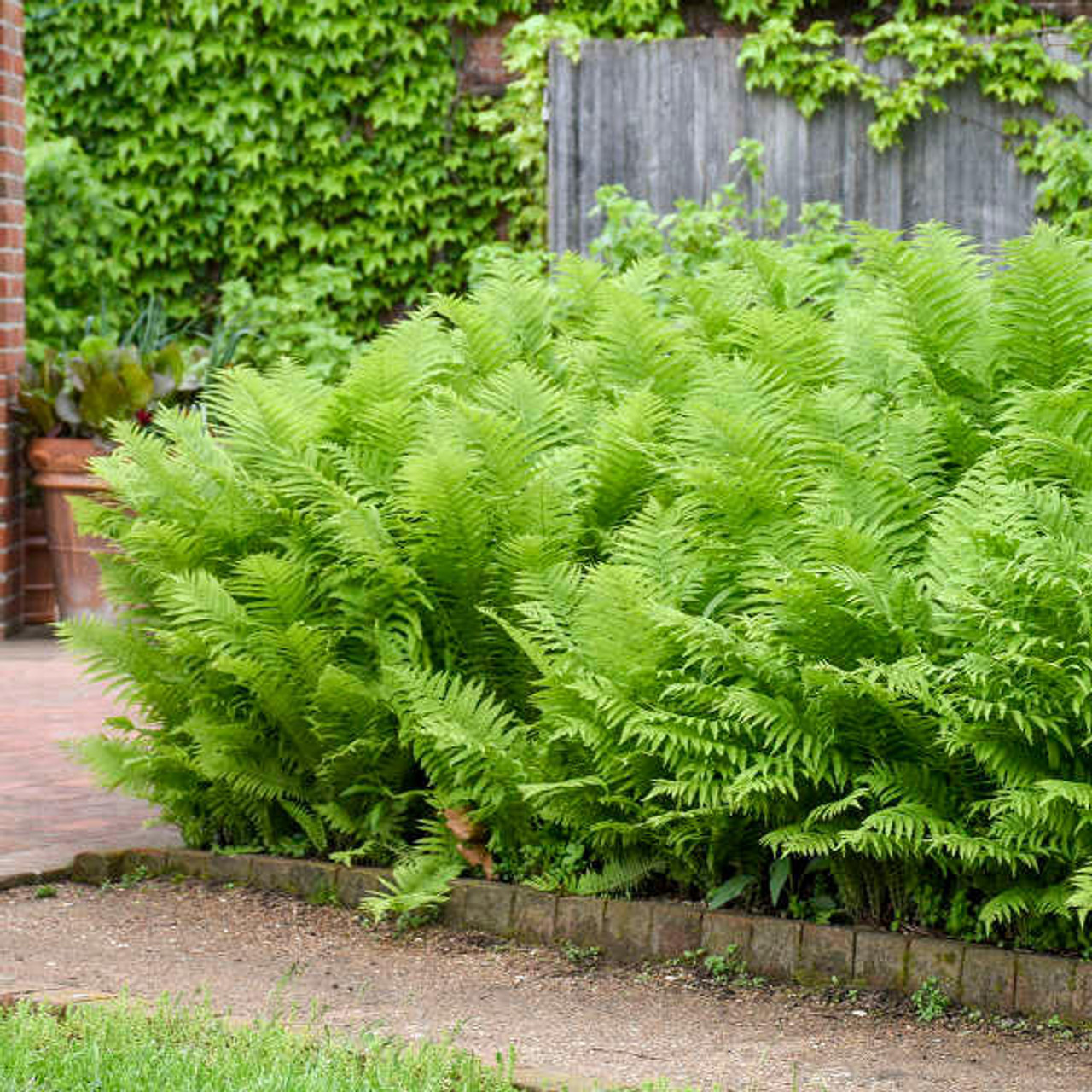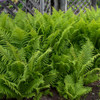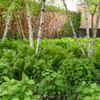Product Description
Matteuccia struthiopteris (20)ct Flat
a/k/a Ostrich fern
A native species, Ostrich is one of the largest and most popular ferns in cultivation today. The dark green, pinnate fronds are shaped like ostrich plumes, being much wider at the top and tapering down to a bare stipe.
The first set of leaves is sterile and has a gracefully arching form. These leaves can reach heights of 6 feet in ideal environments. This set of leaves dies back by early to midsummer and is replaced by a set of fertile, dark green leaves which are about half the height of the sterile ones. These leaves turn a shiny greenish bronze in fall, becoming brown in winter. They remain standing all winter long.
Native to marshy areas and creek beds, Ostrich ferns prefer to be grown in moist, humus-rich soil with a neutral pH. If planted in cool, moist locations, they will tolerate full sun. In general, however, they prefer open shade.
Ostrich ferns need plenty of space to grow since they are rapid spreaders. They spread by dense underground runners which extend out in all directions, quickly forming colonies. Use as a bog plant, border plants, or ground cover. Foliage is a big filler for flower arrangements.
Height: 3.0-6.0 Feet
Spread: 3.0-4.0 Feet
Hardiness Zones: 3,4,5,6,7
Foliage Color: Green shades
Full Sun (> 6 hrs. Direct Sun) - Full Shade (< 4 hrs. Direct Sun)
Average to Consistent Water Needs
Average to Fertile Soil Quality
Deer and Rabbit Resistant
Growth Rate: Rapid
Bog Plant, Border Plant, Cut Foliage, Ground Cover, Attractive Foliage
Matteuccia struthiopteris, commonly known as the ostrich fern, is a graceful and elegant fern that adds a touch of woodland beauty to gardens. It is a deciduous fern, meaning it loses its fronds in the winter, but its upright, vase-shaped growth habit and delicate texture make it a standout in the landscape. Here is a closer look at its key features:
Appearance:
- Ostrich Plume-like Fronds: The fronds of the ostrich fern are long, arching, and feathery, resembling ostrich plumes. They emerge in spring as tightly curled fiddleheads and unfurl to reveal their delicate, lace-like texture.
- Upright Habit: The fronds grow in a vase-shaped or shuttlecock-like arrangement, creating a vertical accent in the garden.
- Green Fronds: The fronds are a vibrant green color, adding a refreshing touch to shady areas.
- Fertile Fronds: In late summer, the fern develops separate, shorter, dark brown fertile fronds that persist through winter, adding winter interest.
Growing Conditions:
- Shade: Thrives in partial to full shade. It prefers some shade during the hottest part of the day to prevent the fronds from scorching.
- Moist Soil: Prefers consistently moist, well-drained soil. It is a good choice for rain gardens, bog gardens, or areas that tend to stay damp.
- Hardiness Zones: Suitable for USDA hardiness zones 3-7, making it a versatile choice for many gardeners.
Care:
- Low Maintenance: Matteuccia struthiopteris is a relatively low-maintenance fern.
- Watering: Keep the soil consistently moist, especially during dry periods.
- Dividing: Divide clumps every few years in spring or fall to maintain vigor.
Uses:
- Shade Gardens: Adds a graceful and textured element to shade gardens.
- Borders: Can be used as a border plant or edging for pathways.
- Woodland Gardens: Blends beautifully into woodland gardens, creating a natural and serene atmosphere.
- Water Features: Its tolerance for moist soils makes it a good choice for planting near streams or ponds.
- Naturalizing: Its spreading habit makes it suitable for naturalizing in moist, shady areas.
Additional Information:
- Native Fern: Matteuccia struthiopteris is native to North America, making it a good choice for native plant gardens or those seeking to attract native wildlife.
- Attracts Wildlife: The fern provides shelter and habitat for various wildlife, including insects and small mammals.
- Deer Resistant: Deer tend to avoid ferns.
If you are looking for a graceful and elegant fern that adds a touch of woodland beauty to your garden, Matteuccia struthiopteris (ostrich fern) is an excellent choice. It is a low-maintenance and versatile plant that will thrive in moist, shady conditions.
Other Details
The most important part of the plant is its root system. Healthy roots are the foundation of a healthy, vibrant plant. The type of plug container used is based on the specific needs of the plants. Perennials offered as bare root traditionally perform better when planted as bare root.Planted in a specialized mix, potted plants have well established root systems. Top growth stage will vary depending on the current life cycle and time of year when shipped. In Winter and early Spring dormant plants may be shipped. Dormant plants may be planted right away, even before the last frost date.
Most bare root varieties are field grown for at least one season, though Hemerocallis and Hosta are grown for two seasons. The bulk of the soil is removed during the harvesting process and the tops of most varieties are trimmed back to the crown. They are graded, packed in shredded aspen or sphagnum moss and stored in freezers until ready to be shipped.
See our Container Sizes and Bare Root Perennials pages for more information.
Plant information and care is provided in the Overview section, Plant Genus Page and general information is provided in the Planting Care & Guides. Additional questions can be asked on each Plant page.
Plant Spacing: Using the maximum mature spread or width of a plant to guide spacing, ensures space to grow to full size. To fill an area sooner, plant them closer together. Just remember, future thinning or transplanting may be needed.
Water: Keep a close eye on newly planted perennials, especially throughout the first growing year. Most early plant loss is due to too much or too little water!

